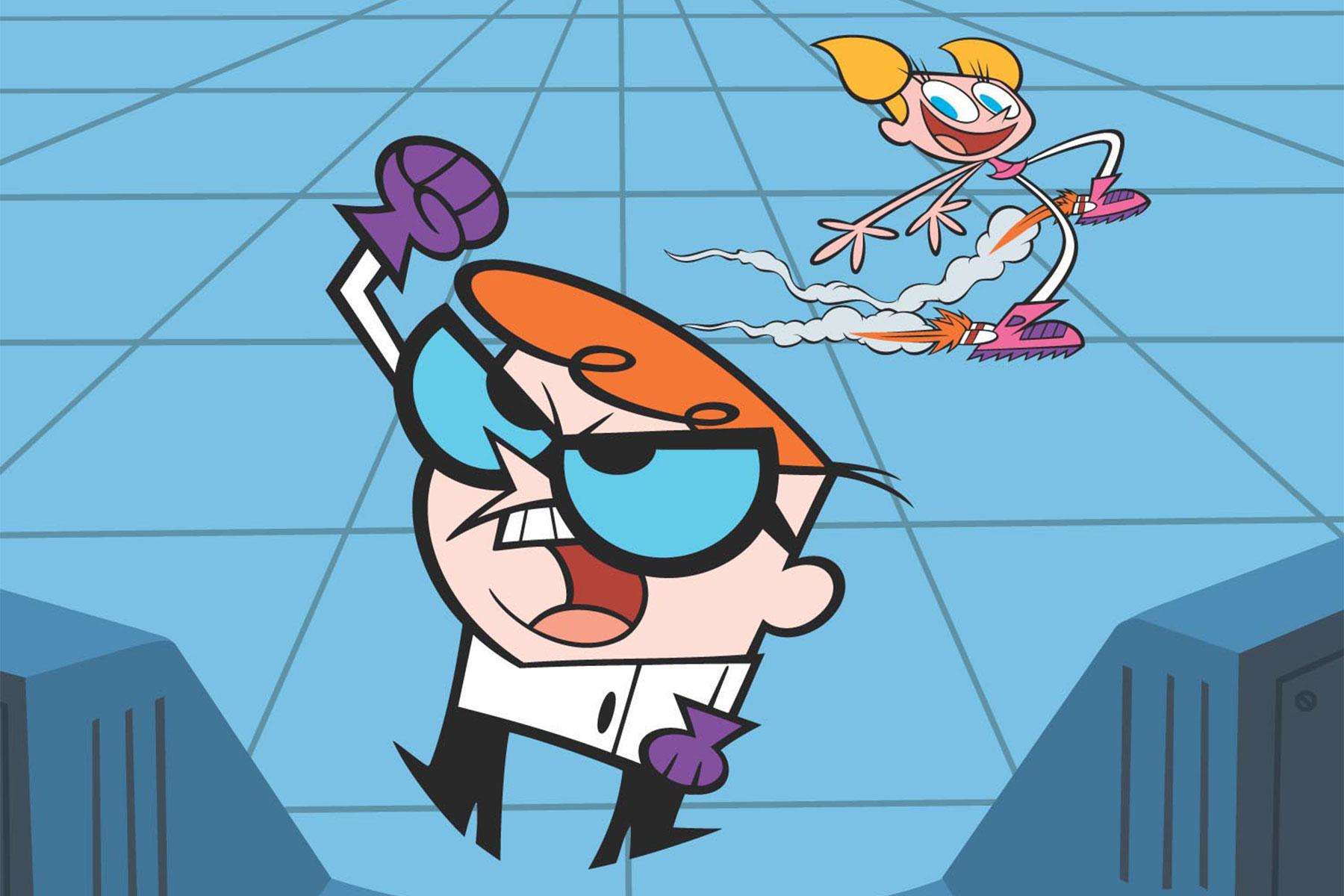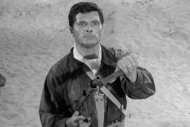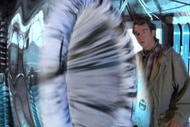Create a free profile to get unlimited access to exclusive videos, sweepstakes, and more!
How Dexter's Laboratory changed American cartoons by looking to live-action movies and anime

Despite lots of nostalgic highlights, American animation during the '70s and '80s was mostly driven by a desire to sell toys rather than by creativity. That started to change in the '90s when Nickelodeon began making creator-driven shows. The medium's next "eureka moment" came shortly after, when Cartoon Network began making original cartoons of its own rather than simply rerunning old classics. It was a little show called Dexter's Laboratory that made the network into an animation powerhouse.
In 1995, under the leadership of Fred Seibert, Cartoon Network launched What a Cartoon!, a series of animated shorts that essentially served as an incubator for creator-driven cartoons. The first of these shorts to get a greenlight and become a full series was Dexter's Lab, a show about a boy genius named Dexter and his sister Dee Dee who always wrecks his experiments, created by Genndy Tartakovsky, a newcomer with only four years of experience doing animation for projects such as Batman: The Animated Series. The show, a result of a mishmash of influences ranging from Sergio Leone and Sam Raimi, to Tex Avery cartoons and anime, marked the start of a new era for Saturday Morning cartoons.
For Dexter’s Lab’s 25th anniversary, SYFY WIRE spoke with creator Genndy Tartakovsky, as well as animators and writers Craig McCracken, Rob Renzetti, and Butch Hartman, to unpack what made the series so special.
Right from the start, the idea of being fully in charge of a show, with free creative reins, allowed Tartakovsky to finally do everything he was never allowed to do by producers. "I worked as a storyboard artist on 2 Stupid Dogs, and everything I did in storyboards, the producer hated," Tartakovsky tells SYFY WIRE. "And it's obviously frustrating. We're all creative people trying to find our voice." Getting the green light on Dexter's Lab was a test of sorts for Tartakovsky, who wanted to see if the wild ideas he had boiling in his mind had any merit.
These wild ideas were the result of a melting pot of influences not limited to animation. Writer and director Craig McCracken, who joined the Dexter's Lab crew from the beginning, recalls the early '90s as a time where an animator couldn't count on ever being able to make their own show, and even those who did weren't guaranteed to last very long. For McCracken, seeing John Kricfalusi get fired from Ren and Stimpy, a show he created for Nickelodeon, was a sort of wake-up call. "We better put everything we've ever wanted to put into a cartoon in these episodes," McCracken says. "Giant robots? Yes. Superheroes? Yes. Crazy science-based stuff? Yes. We didn't know if we'd ever get another chance to make something like this."
Dexter's Lab had all those things, and more. Unlike things like Animaniacs, however, which focused on throwing as many homages and parodies at the audience as possible, Dexter actually had a unique style of visual storytelling that blended its many influences, rather than just copying them. Episodes consisted of three 7-minute segments (though sometimes they'd be two 11-minute segments), so there's limited time to tell stories. The task, then, was to pack as much story as possible into these Quibi-sized chunks of animation. "Whatever we could do to not have dialogue and tell more story, we did," McCracken says. The show would constantly use fast editing to quickly cut from one scene to the next, skipping transitions and just focus on the visual impact and symbolism.
Tartakovsky and his fellow creators found inspiration for their wildly creative children’s cartoon in some not exactly kid-friendly places. Among other notable filmmakers, both Sam Raimi and the Coen brothers — who are adept at telling a story without saying much — influenced the look and tone of Dexter's Lab, to the point where segments like "Dexter Dodgeball" directly quoted Bruce Campbell in Evil Dead 2.
Dexter’s Lab did more than just drop Evil Dead Easter eggs, though. Rami, in particular, was a huge influence on the show’s visual style. The cartoon relied on visual gags to tell stories with as little dialogue as possible. A particular sequence that became a sort of visual mantra for the show was the robot hand-sequence from Army of Darkness, which McCracken recalls Tartakovsky as being obsessed with replicating. "He applied that sequence to the show all the time, especially when Dexter was building stuff," McCracken explains.
The sequence barely shows Ash building the hand, but instead shows the bare minimum of movement and tool-handling, then zooms in on an iconic symbolic visual like a hammer being grabbed, a peasant being surprised, or a screw being turned. Having a strong and rhythmic element in the foreground before shifting focus to the background was a way for Dexter's Lab to be efficient, production-wise, while also offering iconic symbolic visuals in the simplest of ways.
Butch Hartman, who started doing backgrounds for the show before moving on to do storyboards on many episodes, says the show was so focused on the visuals that the storyboards served as scripts.
"Rather than write a script and then hand it in to a storyboard artist, they'd give you a short premise and tell you to storyboard the entire thing," Hartman tells us. "They once told me, 'Dexter and Dee Dee go into an anthill, and Dexter has a new invention called the ant pants,' and that's it. The story is dictated by the visuals."
Take that dodgeball episode, for instance. In just seven minutes we get a very simple setup: a substitute gym teacher forces Dexter to participate in dodgeball, which goes horribly wrong. Most of the dialogue is just the laughter and mockery of three kids who are constantly bombarding Dexter with balls. The camera focuses on the impact of the balls hitting Dexter, and barely shows them moving towards him, except for an extended sequence where three balls chase Dexter across the entire school like it's the Trench Run scene in Star Wars.
And just like George Lucas when he made Star Wars, Tartakovsky was heavily influenced by Spaghetti Western maestro, Sergio Leone. Similar to the Coen brothers and Raimi, Leone employs visual storytelling in a way that feels minimalistic yet still packs a whole lot of story, mostly through his use of silence. Leone would often draw out a scene to emphasize its emotional impact, so Dexter's Lab followed suit.
One of the best examples on the show is the newspaper ninja duel in "Paper Route Bout," which has minimal dialogue, and instead focuses on visuals and sound, a true duel between competing warriors taken straight out of a Leone Western or an Akira Kurosawa samurai movie. The editing in the segment even speeds up or slows down depending on the emotion, cutting rapidly between the ninja's faces and closing in on their newspapers, then cutting away to the broken windows they leave behind, to wide shots of the destroyed neighborhood, and drawing out the quiet scenes where our ronin or cowboy (Dee Dee) is living a quiet life before getting involved in the conflict. The segment is very simplistic and to the point, which makes the action and jokes land harder.
"When you're working for kids' television, the instinct is to overexplain and overshow," Tartakovsky says. "But once you get experience you realize that you can do half as much and still be as impactful. You can rely on music and visuals and take your time." The goal with Dexter, then, was to be snappy like the Hanna-Barbera cartoons of the '60s or classic UPA (United Productions of America) cartoons. The show would use limited animation to emphasize the movement that the audience actually sees, rather than the constant and relentless movement of Animaniacs or Tiny Toons.
"A lot of cartoons at the time would have flat animation," director and animator Rob Renzetti explains. Other cartoons in the era seemingly had movement for the sake of movement, as the number one goal was to keep kid's eyes glued to the screen. "But if all of a sudden, after a bombastic sequence there's a moment of silence and nothing happens, you get instantly drawn into the show, because something's changed."
Dexter's Lab was more than just rote replications of unexpected influences. The series translated those influences and created something new. Though Dexter’s Lab might still use entire segments to pay homage to a show or movie — like a Poltergeist or Speed Racer segment — the animators would mostly strive for a feeling rather than an exact replication of what had come before. McCracken says he often found himself disappointed when rewatching some of the shows he watched as a kid, because they were not as exciting as he remembered them being. "I said, 'We should make the cartoons we thought were made when we were kids,'" McCracken explains. "We wrote that down and put it on Genndy's door. We thought it was better to not actually reference the stuff, but just the memory and the feelings of it."
"If I'm watching something, whether it's animated or live-action or whatever, and I get a feeling from it, I want to duplicate that feeling to the audience," Tartakovsky adds. "Because I feel like that's when the director is successful, when you can communicate those ideas."
Unlike other cartoons of the early '90s like Ren and Stimpy or Rugrats, which were overly expressive and detailed, Dexter's Lab took a page out of UPA cartoons from the 1950s. UPA, the studio behind the Mr. Magoo shorts, among other things, was known for its stylized or simplistic designs, a big departure from the ultra-realistic animation style from Disney at the time. Dexter and Dee Dee are simple enough that any kid watching could replicate the drawings themselves, yet they still had a unique design that made the show distinct from any other cartoon. The cartoonish style fit with the cartoonish plots and physics in the show, making the audience believe in this animated world so unlike our own, yet still recognizable because of the characters.
Many later cartoons in the ‘90s would adopt a similarly simplistic style as Dexter’s Lab, including Hartman’s own cartoon. "When I started making Fairly OddParents, I took cues from what Genndy did in terms of simplifying the designs and using bold colors and simple shapes," Hartman says. It's easy to see the bold departure from the ultra-detailed Ren and Stimpy to the clean and plain shapes in Dexter, and how many Cartoon Network shows would continue to look this way for years to come, from Johnny Bravo to Total Drama.
In addition to being a deliberate and effective creative decision, Dexter’s Lab’s simplicity had another practical effect. After seeing productions like Ren and Stimpy go over budget due to its detailed animation, and having its showrunner fired, McCracken and the team wanted to go in the opposite direction. "A lot of people call it limited animation, but Genndy's preferred term was 'controlled animation,'" McCracken says, referring to the practice popularized by UPA in the '50s, which would emphasize character close-ups and camera movements in order to avoid animating every single movement.
Though animators at UPA originally intended for this practice to be an artistic choice, Hanna-Barbera Productions adopted it as a cost-cutting measure, which persists to this day. "The idea was that you're only animating precisely what you need to, but what you are animating, you're doing so really well. The other stuff you can just hold still, or pan the camera to get away with not fully animating it," McCracken adds. Though the use of controlled animation came as a result of having to easily relay information and orders to the animators abroad who couldn't physically be there to discuss the making of the show, it quickly evolved into a style that's recognizable in everything Tartakovsky does, and much of what his former co-workers animate as well, including later series like Foster's Home for Imaginary Friends and Primal.
Though McCracken and Renzetti refuse to take credit for Dexter's Lab influencing modern cartoons, it's not hard to see a change in the way animated shows are made today as compared to then. Whether it's looking at live-action for cinematic techniques, or anime for its longform storytelling, or simply being able to use silence and cost-effective limited animation to make each moment stand out, an entire TV network's worth of cartoons may not be here now if it wasn't for a group of young animators looking to shake things up.


























